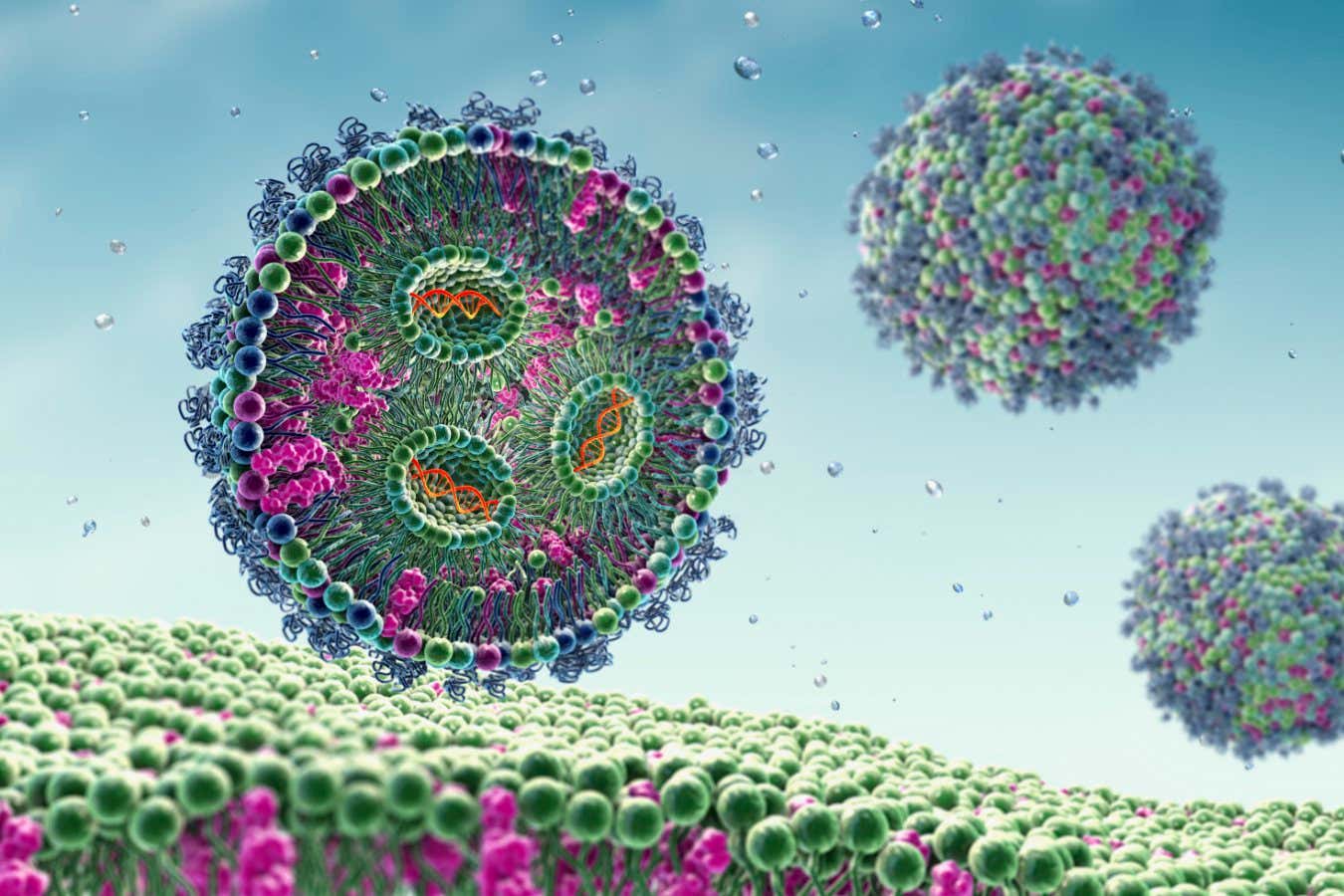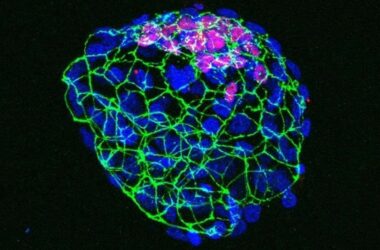A team of researchers at Yale University has developed a safer and more effective method of delivering messenger RNAs (mRNAs) to the nose and lungs. This development could lead to enhanced vaccines for respiratory infections like covid-19, as well as improved treatments for lung conditions such as cystic fibrosis and asthma.
mRNAs serve as templates for building proteins in cells. By packaging mRNAs into small particles that do not stick to mucus, the researchers have increased the efficiency of mRNA delivery to the cells lining the respiratory tract. The challenge lies in making the nanoparticles resistant to adhesion with mucus, which acts as a barrier.
The temporary nature of mRNAs, which break down after days or weeks, poses a challenge when using them for protein production or vaccine development. Despite this limitation, mRNA vaccines are beneficial as they train the immune system to target specific proteins during viral infections. Using mRNAs to deliver therapeutic proteins for inherited conditions, such as cystic fibrosis, also shows promise.
Maintaining the stability and integrity of mRNA molecules is crucial for their successful delivery into cells. While lipid nanoparticles have proven effective when used in injection-based mRNA vaccines like those against covid-19, they are less efficient in traversing the mucus layer inhaled or administered as a nasal spray. In addition, higher doses of mRNAs are needed for treating conditions like cystic fibrosis, which can lead to lung inflammation when delivered via lipid nanoparticles.
The team at Yale University previously demonstrated that mRNAs can be successfully delivered to cells by packaging them in nanoparticles made of a combination of two types of polymers, rather than lipids. Building on this research, they optimized the approach for delivering mRNAs to the lungs.
Through their experiments, the researchers observed that their polymer nanoparticles enabled the delivery of mRNAs to a significant proportion of cells in the respiratory tract. In mice, the nanoparticles successfully delivered an mRNA coding for a glowing protein called luciferase, resulting in a much higher light production compared to existing mRNA delivery methods.
Next, the team tested their nanoparticle-based intranasal vaccine on mice that are highly susceptible to covid-19. The results were promising, with around 70% of the vaccinated mice surviving after being administered a massive dose of the virus, in contrast to all the non-vaccinated mice, which died. Further comparisons with conventional vaccines are currently underway to determine the effectiveness of the intranasal approach.
The hope is that intranasal vaccines delivered through a spray will offer better protection than traditional intramuscular injections. The surface areas of the respiratory system that are most exposed to viruses will be stimulated, strengthening immunity at these entry points.
However, intranasal sprays alone may not be enough for vaccination in humans. Additional devices such as nebulizers, which convert liquid medicine into a fine mist, might be required to ensure that the nanoparticles effectively reach the lungs.
Based on this technology, a company called Xanadu Bio has been established to develop vaccines for respiratory conditions, including flu and respiratory syncytial virus (RSV). In addition, the Yale University team is working on treatments for cystic fibrosis using the polymer nanoparticles. These novel nanoparticles could deliver a working version of the CFTR protein or mRNAs that correct mutated CFTR genes, potentially providing longer-term effects for cystic fibrosis patients. It should be noted, however, that cystic fibrosis affects other parts of the body beyond the lungs, so treating the lungs alone would not offer a complete cure.








